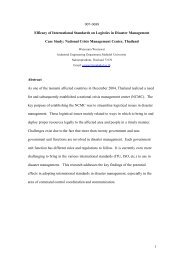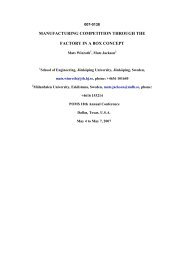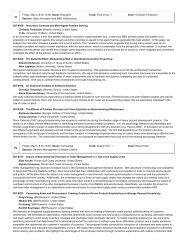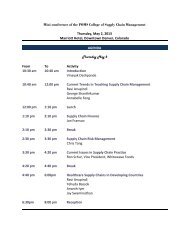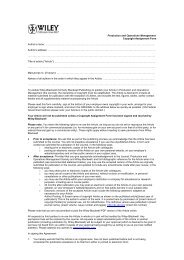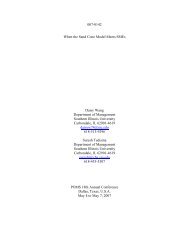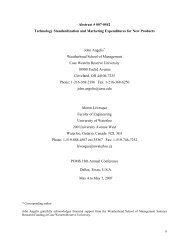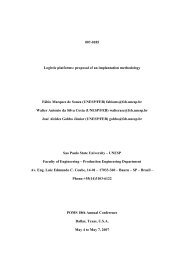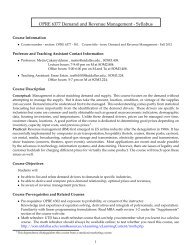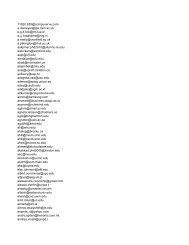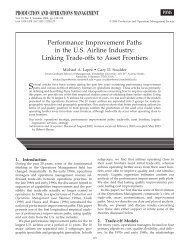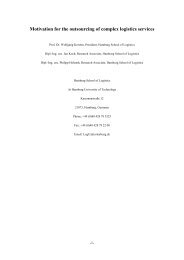Improvement of Lean methodology with FMEA - POMS
Improvement of Lean methodology with FMEA - POMS
Improvement of Lean methodology with FMEA - POMS
Create successful ePaper yourself
Turn your PDF publications into a flip-book with our unique Google optimized e-Paper software.
13<br />
14<br />
15<br />
16<br />
17<br />
18<br />
discipline and<br />
regularity<br />
characteristics<br />
Control on<br />
Decision making<br />
flaws and<br />
limitations<br />
Do not consider<br />
Initial results<br />
Key Muda's and operational priorities<br />
recognition / quality improvement<br />
and decreasing the costs / decreasing<br />
the requirements <strong>of</strong> processes /<br />
concentrating on "make to order"<br />
systems ( based on customer opinions<br />
and requirements / visual<br />
management techniques and other<br />
similar approaches in order to<br />
improve the working conditions<br />
Process value stream<br />
Based on quality improvement<br />
techniques<br />
The subject under study is not<br />
accurate / not enough training for<br />
<strong>Lean</strong> projects / limitations <strong>of</strong><br />
equipments in order to decide<br />
strategic and operational priorities /<br />
lack <strong>of</strong> equipment for resolving the<br />
bottlenecks<br />
Motivation and morale among<br />
personnel using <strong>Lean</strong> principles<br />
Less process time<br />
Concentrating on customer requirements<br />
/ recognizing and prioritizing the<br />
potential failures / equipment correction<br />
and improvement / taking the suggestions<br />
seriously<br />
Performance ( process – product )<br />
Based on failure prevention<br />
Not considering all the failure modes /<br />
not separating the failures , ( not<br />
considering their impact on each other) /<br />
weak and unrealistic documentation<br />
NVA 's<br />
Less time – failure prevention<br />
19<br />
20<br />
Project picking<br />
criteria<br />
slogan<br />
High waste resources – low<br />
pr<strong>of</strong>itability – lack <strong>of</strong> flexibility –<br />
customer dissatisfaction – lack <strong>of</strong><br />
efficiency and effectiveness<br />
Supply as much as you need it , and<br />
when you need it ( not more , not<br />
sooner )<br />
High risk – high defects – low quality –<br />
high costs – costumer dissatisfaction –<br />
lack <strong>of</strong> efficiency – lack <strong>of</strong> reliability<br />
Act beforehand , instead <strong>of</strong> react after an<br />
incident<br />
5. The Synergy between <strong>FMEA</strong> and <strong>Lean</strong> thinking<br />
Examining the similarities and differences between <strong>FMEA</strong> and <strong>Lean</strong> manufacturing (see table 1) shows<br />
close relationship between these two; similar goals and objectives, and concentration on minimizing the<br />
defects. The potentials and abilities <strong>of</strong> each <strong>of</strong> these two strategies make it difficult to choose, utilize<br />
and order. But if we understand the weak points <strong>of</strong> each technique, we can fill the gap <strong>with</strong> proper tools<br />
and principles from other one (i.e.: the strong points <strong>of</strong> one strategy make up for the weak points <strong>of</strong> the



